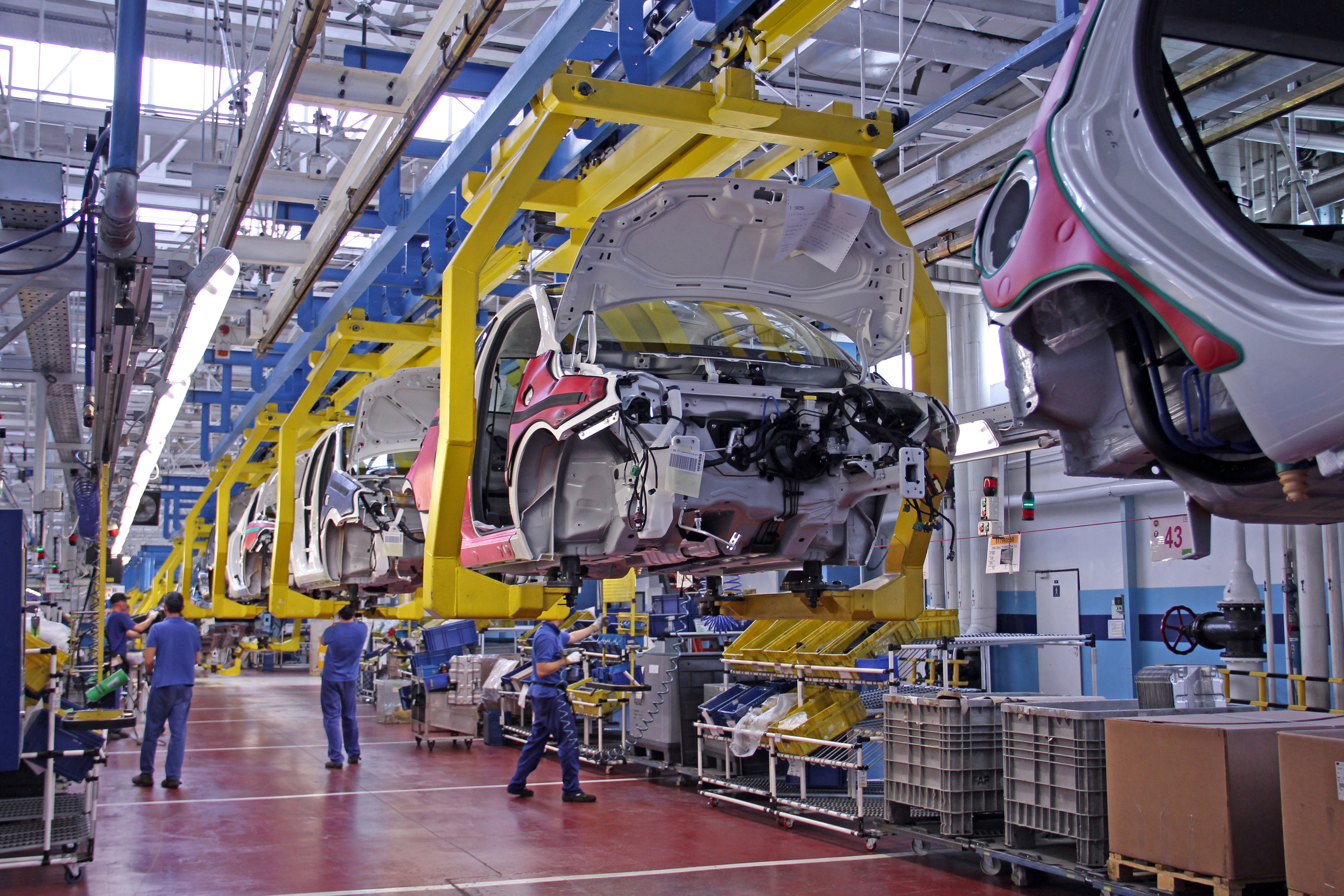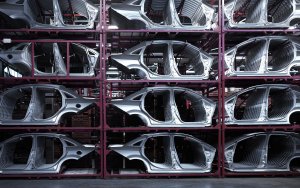Automotive original equipment manufacturers (OEMs) and suppliers are facing unprecedented supply chain disruptions. The microchip crisis has made it more difficult to produce vehicles since the pandemic has disrupted nearly every aspect of the global supply chain and the lack of even a single component may be enough to halt production. The pandemic’s effects have been magnified by decades of delocalization and fragmentation of production, resulting in long and complex value chains, together with lean production, whereby inventories are kept low to reduce costs. The shortages have led to reconsidering the need to shorten value chains, diversify supplies, and/or identify those components that need to be re-shored to prevent dependency on overseas sources for critical parts. With the new world of mobility and electrification accelerated by the pandemic, a whole segment of the value chain producing parts and components for the internal combustion engine will have to restructure or downsize. Batteries and chips are at the forefront of the OEMs’ worries.
With automotive global value chains in such turmoil, the definition of the pre-pandemic situation presented in the paper provides an indispensable starting point for analysis of the repercussions of the current technological and geopolitical transition on the productive clusters and sectoral specializations of the main regions and countries.
Thus far, in the economic literature on international trade, the study of the automotive global value chains has been addressed using network analysis, focusing on the centrality of geographical regions and countries while largely overlooking the contribution of countries’ bilateral trades in components and parts to the structuring of the subnetwork of countries and their specific position in the overall trade network.
In our new INET Working Paper, we analyze the trade networks of 30 groups of automotive components and parts between 42 countries (accounting for 98% of world trade flows in those items) over a period of 25 years. Using the Infomap multilayer clustering algorithm, we identify clusters of countries and their specific trades in the automotive international trade network, highlighting the relative importance of each cluster and the interconnections between them, as well as the contribution of countries and of components and parts in the clusters.
It should be noted that clusters are not derived from examination of the trade flows within and outside the geographical areas, as is current practice in the literature, but by analyzing recurring patterns of bilateral trades between countries worldwide. Drawing the aggregate bilateral trade flows, we identify a clear structure in the main subnetworks of trade flows with an evident geographical base: one subnetwork is centered in Europe, while another, initially centered in the Pacific area (embracing countries in East Asia, the US and Canada), changed with China’s entry in the WTO in 1994 and implementation of North American Free Trade Agreement. Several other smaller subnetworks, not specifically linked to any of the main subnetworks, have emerged and changed in structure and size over time.
The value added of the multilayer clustering method lies in the identification of clusters over time and measurement of the changes in trade flows within and across clusters. Focusing on the changes in the geography of trade relations, we find denser and more hierarchical clusters generated, respectively, by Germany’s trade relations with EU countries, the US preferential trade agreements with Canada and Mexico, and the rise of China. Focusing on the composition of trade, we observe that the largest clusters show a similar structural composition of trade. It should be noted, however, that although the most detailed statistics grouped under 30 SITC codes specific to automotive production encompass almost ten thousand different components and parts, the quality and characteristics of the various components and parts are likely to differ significantly, implying a considerable increase in the actual number of different items traded.
The Infomap multilayer analysis singles out which SITC codes of components and parts determined the relative positions of countries in the various clusters as well as of the smaller clusters that turn out to be highly specialized with different trade orientations. Changes over time in the relative positions of countries and their specializations in multilateral trades are detailed for the main clusters and can be explored for all the clusters using the online tool Tableau.[1] Over the years, the regionalization of trade thickens (many small clusters of countries disappear), but the links between clusters also increase significantly. Measuring the growing and appreciable importance of connections between the clusters over time represents an original contribution to the literature on regionalization of trade, which generally reserves little attention to this phenomenon.
The economic implications of inter-regional connections have become evident during the COVID-19 pandemic, with supply chains severely affected by lockdown in countries where suppliers were located and for which there were no substitutes within the clusters. The issue of redesigning the supply chain entered the agenda of carmakers and debates on national/local sovereignty, together with the need to reconsider redundancy as a more efficient solution - compared to just-in-time or free-pass production methods - and logistics and transport as possible causes of bottlenecks in supply chains. In the short term, the impact of these events has been shifted to price increases along the supply chain or has affected the cars’ performance (as in the case of cars delivered in reasonable time and price but with fewer microchip devices). In the medium term, reorganization of the automotive industry will be marked by the carmakers’ commitment to comply with the requirements of CO2 emissions, the durability of batteries, smarter mobility – issues subject to heated debate and on which there is no agreement between the countries (as emerged in the United Nations Climate Change Conference, COP26). The paper’s analysis presents a picture of the trade conditions before the changes induced by the COVID-19 pandemic and electric and sustainable mobility, offering a benchmark for analysis of the changes post-transition.
The paper also affords an opportunity to analyze the impact of trade treaties in changing geopolitical scenarios. The focus on the US and Mexico on the one hand, and Germany and the Central and Eastern European countries (CEE: Czech Republic, Hungary, Poland, Slovakia) on the other, drives the comparative analysis. Data on the US-led cluster sheds light on the major shift in international trade driven by NAFTA (in particular the triangulation of trades occurring via Mexico), which could be compared with the effects of the boost to direct foreign investment in Mexico expected under the new USMCA agreement.
Different perspectives emerge on the relations between the core countries and their partners (semi peripheries and peripheries) in the various clusters. In the US-led cluster, closer connections within the cluster went hand-in-hand with a reversal of the relative importance of the two main partners, Canada and Mexico. Conversely, the structural changes within the Germany-led cluster highlight the strategy of the German OEMs aimed at integrating the CEE countries in ever closer connections, each of them still maintaining trade relations outside the Germany-led cluster, thus strengthening its connections with world trade.
Finally, the detailed analysis focused on individual components and parts casts light on the trade patterns related to the production of internal combustion engines (ICEs). The results show the different dynamics of parts and components for ICEs over time, and the potential impact of the transition to electric vehicles on the main countries exporting ICEs. It is not possible, however, to estimate, from trade data alone, the potential impact on their production structure. Future trade flows in components and parts related to electric mobility will emerge in relation to the new, rapidly changing technologies and the geography of trade that national interests and company strategies will shape.
Note
[1] Selected Figures and Tables marked with the symbol can be browsed online on Tableau Public, with respect to data and community detection (part A), and to flows within and between clusters (part B).











